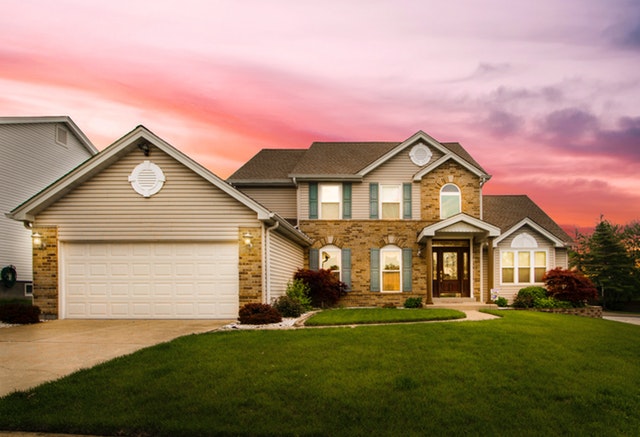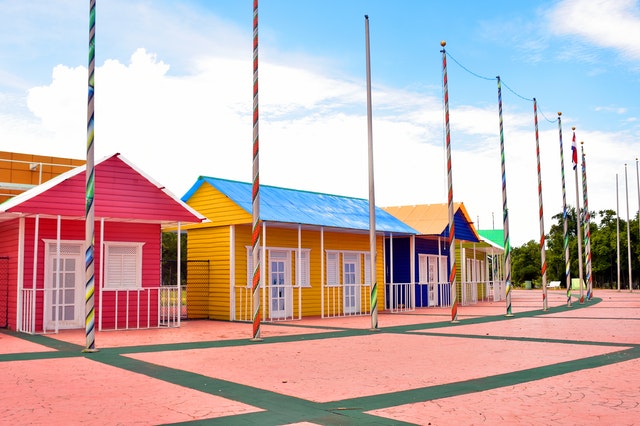New Home Prices Going Down Making Them More Affordable
Residential real estate developers in America are responding to a national slowdown in new home construction by building smaller homes that are more  modestly priced. The demand for smaller, less expensive homes is growing, while the overall demand for new custom homes is declining. Prices decreased slightly, by about one-half percent, from the price levels in 2018 for newly-constructed homes.
modestly priced. The demand for smaller, less expensive homes is growing, while the overall demand for new custom homes is declining. Prices decreased slightly, by about one-half percent, from the price levels in 2018 for newly-constructed homes.
Lower Profits For Builders
The median price for a newly-constructed home in America is $372,900. The median sales price of an existing home is $309,700.
American construction companies are feeling the pressure to build lower-priced homes along with the increased costs for imported building materials due to the tariffs and a labor shortage. This is lowering profits for the construction companies, yet creates a buying opportunity for those looking for a new home.
Lower New Home Inventory Levels
These pressures caused new home inventory to decrease by 1% from the 2018 levels. To put this in perspective, the inventory of new homes only decreased this much in 2013. Even though mortgage loans are easier to come by than a number of years ago, there is not the same demand as before for new homes. Perhaps, this is an advance indicator of an upcoming slowdown.
Down-Sized Demand
The U.S. Census reports that the average size of a new home went from 1,660 square feet in the 1970s to 2,687 square feet in 2105. In 2018, the average size of a new home was only 2,386 square feet.
During 2018, there were around 119,000 contractor-built single-family new homes that started construction and over 840,000 that were completed.
Other interesting trends reported by the Census about the 840,000 new single-family homes that finished construction in 2018 include:
- 783,000 of the new homes have air-conditioning installed, which is 93% of the total.
- 778,000 of the new homes have wood frames.
- 59,000 of the new homes have concrete frames.
- 336,000 of the new homes have a heat pump.
- 270,000 of the new homes have a porch or patio.
- Only 10% or 84,000 of the new homes have two bedrooms or fewer.
- About half or 376,000 of the new homes have four bedrooms or more.
- 31,000 of the new homes have one and one-half bathrooms or fewer.
- 306,000 of the new homes have three or more bathrooms.
Conclusion
Builders who offer smaller, lower-priced homes are still experiencing strong demand. In fact, the demand for these modest homes is growing. This trend is likely to continue for the time being.
If you are in the market for a new home or interested in refinancing your current property, be sure to contact your trusted home mortgage professional.

 A new group of young American adults is emerging as home buyers. These are the young adults who were born after 1995 and are part of the demographic group named Generation Z (Gen Z). In 2019, there are 31.5 million Gen Z members who are adult age. This will increase to 44.5 million adults in this demographic group by 2032 as all the younger members become adults.
A new group of young American adults is emerging as home buyers. These are the young adults who were born after 1995 and are part of the demographic group named Generation Z (Gen Z). In 2019, there are 31.5 million Gen Z members who are adult age. This will increase to 44.5 million adults in this demographic group by 2032 as all the younger members become adults. The average size of an American home has been increasing since the 1970s. The American Enterprise Institute (AEI) reports that, in 1973, the median size for a new home in the United States was 1,660 square feet.
The average size of an American home has been increasing since the 1970s. The American Enterprise Institute (AEI) reports that, in 1973, the median size for a new home in the United States was 1,660 square feet.